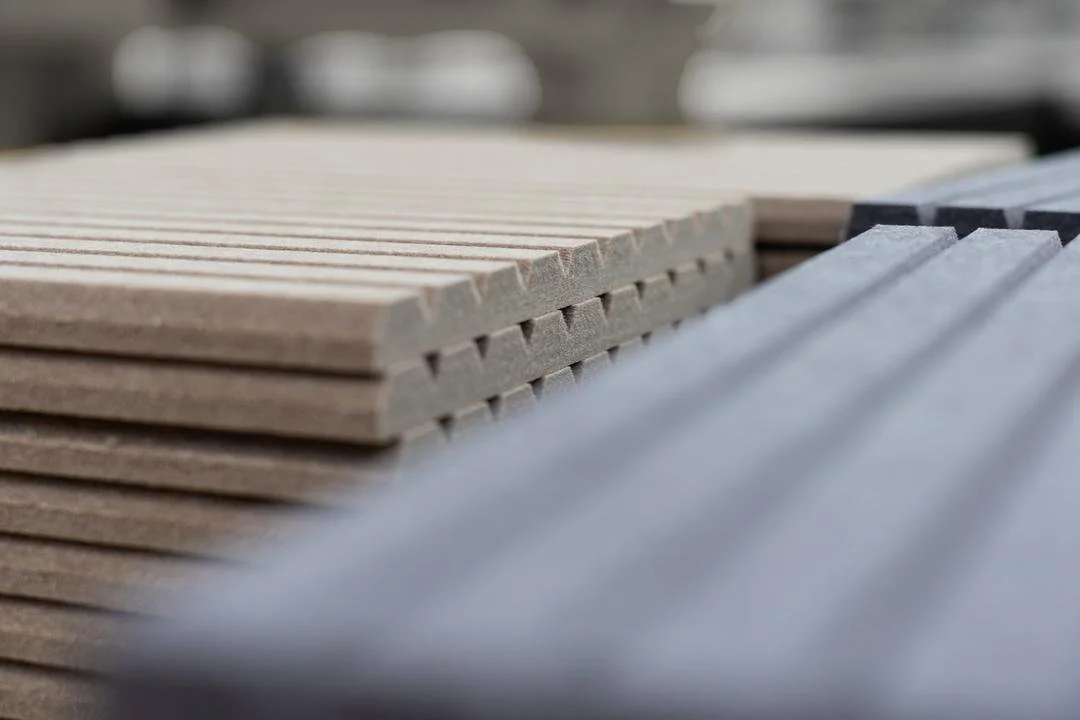
The Future of Acoustics in Eco-Friendly Building Design
Sustainability Meets Sound Design
Sustainability now drives nearly every aspect of modern construction and architectural design. With the global focus on environmental responsibility and resource efficiency, building professionals are rethinking traditional approaches — including acoustics.
Historically, acoustic design focused on improving sound quality using materials and methods that weren’t always environmentally friendly. Today, the future of eco-friendly acoustics lies in combining high-performance sound control with sustainable materials and design strategies that reduce environmental impact.
Sources:
Acoustics: A Key Criterion for Sustainability — Green Design Consulting (2022). https://www.greendesignconsulting.com/single-post/acoustics-a-key-criterion-for-sustainability
Asdrubali, F. et al. A Review of Sustainable Materials for Acoustic Applications, Building Acoustics (2012). https://www.researchgate.net/publication/235288360_A_Review_of_Sustainable_Materials_for_Acoustic_Applications
D’Alessandro, F. et al. Sustainable Acoustic Materials, Sustainability, MDPI (2020). https://www.mdpi.com/2071-1050/12/16/6540
Role of Acoustic Panels in LEED-Certified Buildings — Auralaid (2024). https://auralaid.com/role-of-acoustic-panels-in-leed-certified-buildings/
Why Acoustics Matter in Green Buildings
Acoustic design is essential for comfort, health, and productivity. Poor sound management leads to noise pollution, which can disrupt concentration, hinder communication, and increase stress. In settings like schools, hospitals, and offices, effective acoustic solutions are critical to creating spaces where people can focus, heal, and collaborate. In eco-friendly building design, these solutions must also align with sustainability goals, such as:
Lowering a building’s carbon footprint
Using renewable or recycled materials
Minimising ecological disruption
Sources:
Ecophon. The Science of Acoustics: Sound and Productivity in Workspaces.https://www.ecophon.com/in/articles/knowledge/science-of-acoustics-sound-and-productivity-workspaces/
Chaurasia, V. et al. (2025). Impact of Acoustics on Healing and Wellbeing in Hospitals. Noise and Health Journal.https://journals.lww.com/10.4103/nah.nah_62_25
Number Analytics. The Role of Acoustic Comfort in Professional Practice and Sustainable Building Design.https://www.numberanalytics.com/blog/the-role-of-acoustic-comfort-in-professional-practice

Sustainable Acoustic Design Strategies
Beyond materials, eco-friendly acoustic design incorporates architectural strategies that naturally improve sound quality and reduce the need for synthetic treatments.¹
Space Planning
Strategically separating noisy and quiet zones — for example, placing meeting rooms away from mechanical equipment — reduces sound transfer naturally. Buffer zones and smart layouts minimise reliance on additional acoustic panels.²³
Green Roofs and Living Walls
Vegetated roofs and walls not only boost thermal performance and biodiversity but also act as natural sound absorbers. Soil, foliage, and plant structures absorb and scatter sound waves, reducing urban noise intrusion.⁴⁵
Soundscaping
Using controlled sound elements, such as water features or soft background audio, can mask unwanted noise. Soundscaping is particularly effective in urban settings, adding to the ambience without relying on non-sustainable materials.⁶
Sources:
Ultraviolet. Eco-Friendly Acoustics in Sustainable Building Design. https://ultraviolet.london/learn-more-sustainability — provides an overview of how acoustic design is integrated into sustainable building strategies.
Inclusive Spaces. Acoustic Design – Universal Design Manual for Inclusive Spaces. https://inclusive-spaces.eu/acoustic-design/ — outlines space‐planning strategies for acoustic zoning and buffer zones in building layouts.
Echo Design. Acoustic Zoning: Designing Soundscapes in Modern Architecture. https://echodesign.si/acoustics-101/blog-post-title-two-bpklp — describes strategic layout of noisy and quiet zones for better acoustic separation.
Anderson Acoustics. Acoustic Benefits of Green Infrastructure in Urban Areas. https://andersonacoustics.co.uk/news/acoustic-benefits-of-green-infrastructure-in-urban-areas/ — gives evidence of the acoustic benefits of green roofs and walls, including sound reduction levels.
Buildings. Green Walls Are Useful as Acoustic Insulation. https://www.buildings.com/resiliency-sustainability/article/10187909/green-walls-are-useful-as-acoustic-insulation — details acoustic insulation performance of vegetated walls.
Sound of Silence Acoustics. Soundscaping: Designing Urban Areas with Peaceful Noise. https://sosacoustics.co.uk/2024/11/26/soundscaping-designing-urban-areas-with-peaceful-noise/ — explains how controlled sound elements (e.g., water, natural sound masking) can be used instead of synthetic materials.

Sustainable Acoustic Materials for Green Building
One of the biggest shifts in sustainable acoustic design is in material selection. Traditional insulation like fiberglass and foam may perform well acoustically but can involve harmful chemicals or non-renewable processes.¹ The next generation of green building acoustics is embracing materials that are:
Highly effective at sound absorption
Low impact on the environment
Safe for indoor air quality
Recycled Materials
Acoustic insulation made from recycled cotton and denim offers excellent sound absorption while reducing landfill waste. These materials come from post-consumer textiles, requiring less energy to produce than traditional fiberglass.²
Natural Fibres
Materials like wool, hemp, and flax are renewable, biodegradable, and free from volatile organic compounds (VOCs). They provide both thermal and acoustic benefits, improving indoor comfort while supporting healthy air quality.³
Mycelium Composites
Mycelium — the root structure of fungi — can be grown into moulded panels for sound insulation. Lightweight, strong, and fully biodegradable, mycelium acoustic panels are an innovative example of biomaterial use in green building.
Sources:
Asdrubali, F. et al. A Review of Sustainable Materials for Acoustic Applications, Building Acoustics (2012). https://www.researchgate.net/publication/235288360_A_Review_of_Sustainable_Materials_for_Acoustic_Applications
Soprema UK. Blue Jeans: Sustainable Insulation from Recycled Denim (2023). https://www.soprema.co.uk/en/article/sopravoice/soprema-blue-jeans-sustainable-insulation
Hempitecture. HempWool® Natural Fibre Insulation (2024). https://www.hempitecture.com/hempwool
Mogu. Mycelium Acoustic Panels – Sustainable Bio-Based Materials (2024). https://habitatmatter.com/mogu/

Real-World Examples of Eco-Friendly Acoustics
Vancouver Convention Centre West: A six-acre living roof provides a natural acoustic barrier, enhances thermal performance, and supports wildlife habitats.
EchoPanel Installations: Made from recycled plastic bottles, EchoPanel is widely used in offices and commercial spaces to reduce reverberation while meeting sustainability targets.
The Path Forward
The future of acoustics in eco-friendly building design is about integrating sound control into the core of sustainable architecture — from material sourcing to construction methods. By choosing recycled, renewable, and biodegradable options, and using smart design strategies, architects can create buildings that sound as good as they look, without compromising the planet.
SOURCES:
“Sustainable Acoustic Solutions : Eco-Friendly Materials in Modern Buildings” — Ecophon.
